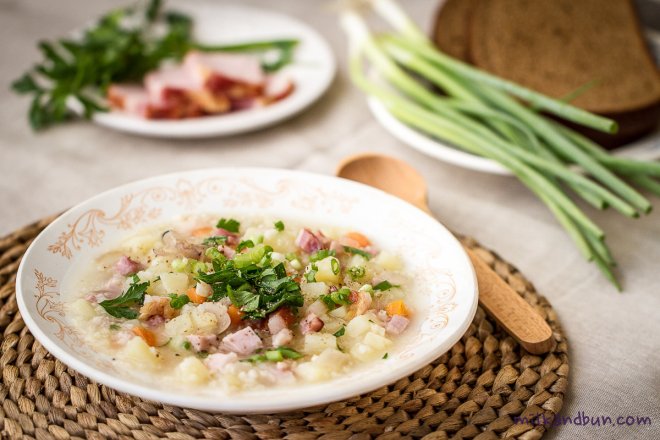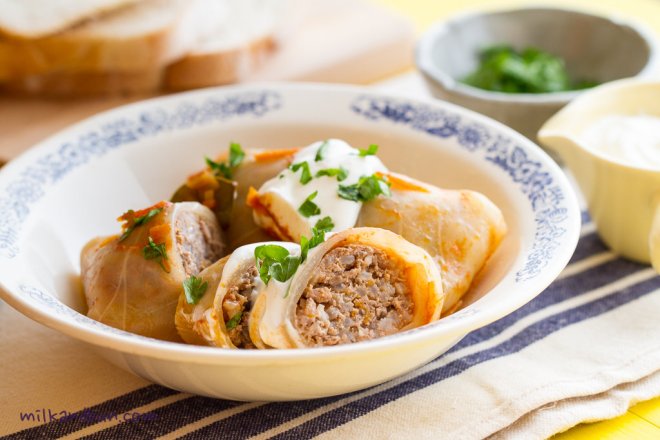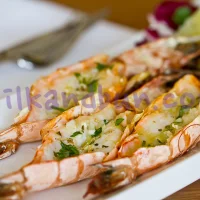Kulesh – simple thick soup/pottage, that was popular in old times among peasants and Cossacks. It was also called “field pottage or kasha”, as it was often cooked by farmers for their lunch during field works. This pottage consisted mainly of millet and any root vegetables that were available at the moment. Garnished with some onions and salo (salted or cured fat, usually pork one), kulesh was prepared on a fire, that added a nice smoked flavor to the whole dish.
It should be thick enough but if you prefer thinner consistency add more water. Mine was thick and nourishing because of smoked meat (cooked pork belly). Using smoked meat replaces the cooking on an open fire. But feel free to make completely vegetarian version and omit the meat.

Once I wrote that millet is a healthy grain or seed. And if you still think it’s just for the feeding birds, you’re completely wrong and miss lots of benefits of this lovely grain. It’s a good source of vitamins B, calcium and iron. Here another recipes that I do love and cook at home: sweet breakfast millet porridge and autumn recipe – millet cooked in a pumpkin pot.
Kulesh
You can add some cubes of celery root along with other vegetables.
Ingredients
4 medium potatoes, cubed
1 large carrot, cubed
200g millet
1 tbsp vegetable oil
1 large onion
150g smoked pork belly
1 bay leaf
fresh chopped parsley and spring onion, optional
S&P to taste
Method
- Boil 2l water in a large pan. Add cubed vegetables and some salt. Bring to boil, reduce the heat, cover with a lid and simmer about 15 minutes.
- Wash millet throughly under running water. You may also cover millet with some warm water, it helps to cook it faster.
- Add millet to the pot along with bay leaf and simmer for 10-15 minutes more or until it’s cooked.
- Meanwhile, slice or chop onion, and cut pork belly into thin slices or chop it as you like. Heat the oil in a frying pan and saute onion until it’s soft. Add pork belly and fry for few minutes.
- Stir the onion-pork mixture into the soup. Adjust the seasoning.
- Pour the soup into serving bowl. Sprinkle with fresh herbs, if desired. Serve with bread.
Enjoy!




























